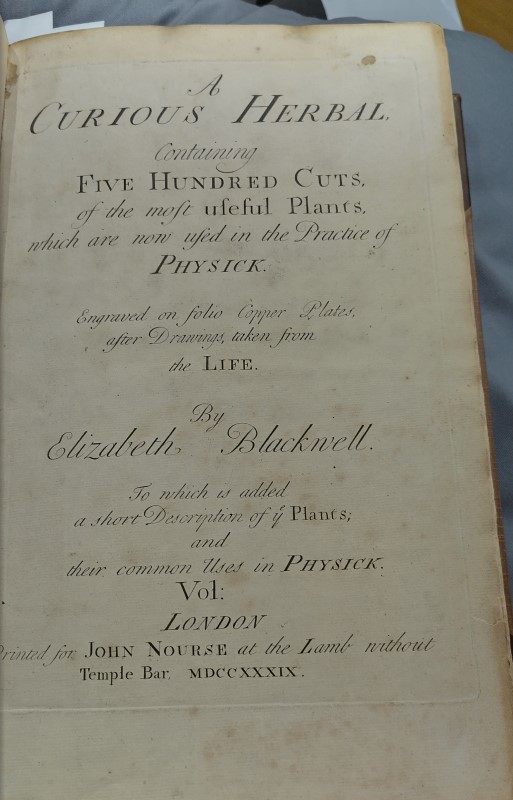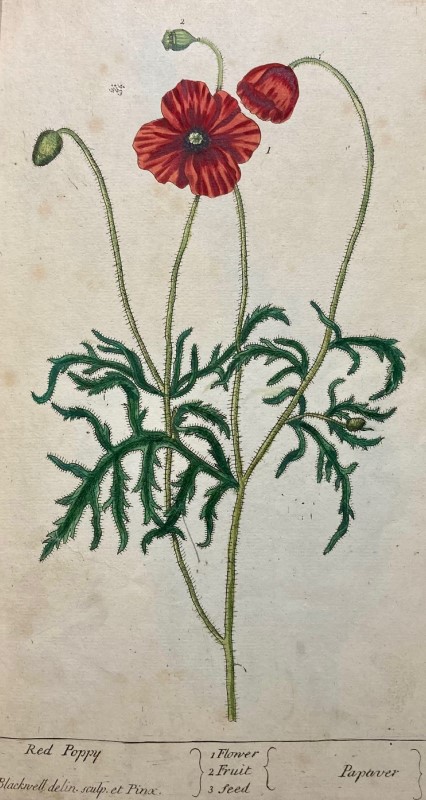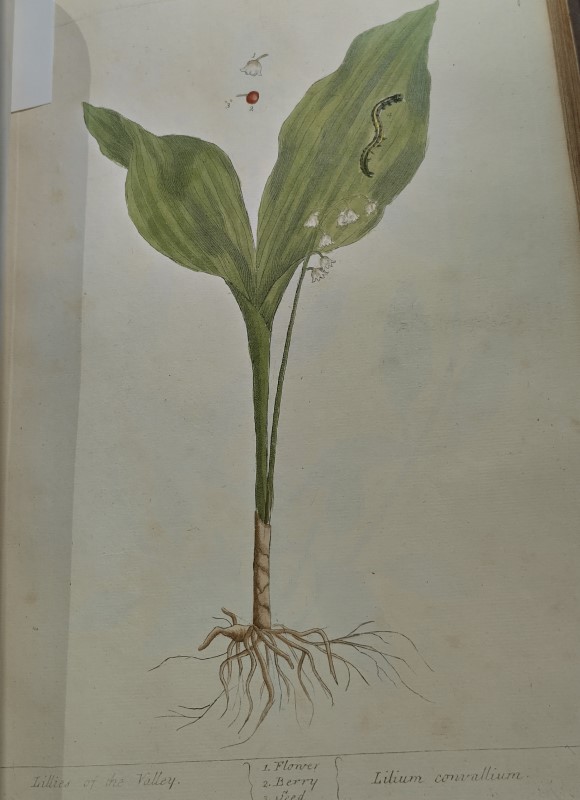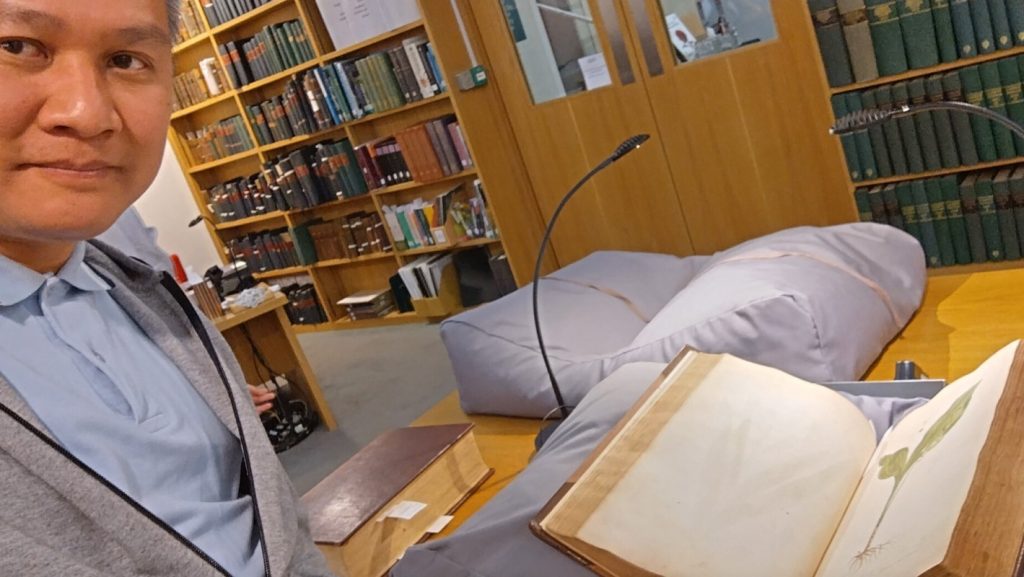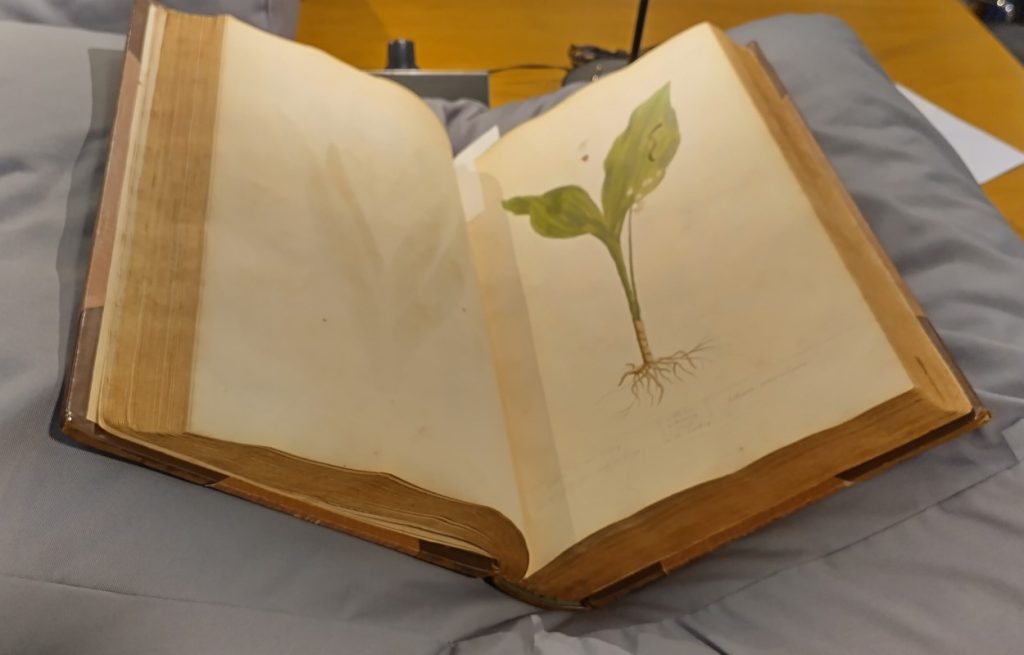Last month, a group of RGS members visited the RHS Lindley Library in Vincent Square. The Library holds world-renowned collections of early printed books, the archives of the RHS, botanical art collections and modern books on the history of horticulture, botanical art and practical gardening. One of our members was delighted to find her own book on their shelves! Thanks to all those who sent in pictures for this article.
The librarians had prepared exhibits for us to see, and presented them in a most interesting way. The first was an archive of the Ruhleben Horticultural Society – set up in an internment camp for British men just outside Berlin during the first world war. The inmates, needing both occupation and food, set up a Horticultural Society and kitchen gardens growing everything from potatoes to exotic fruit and flowers. The society became an associate member of the RHS, who sent them parcels of seeds, and they held two shows per year.
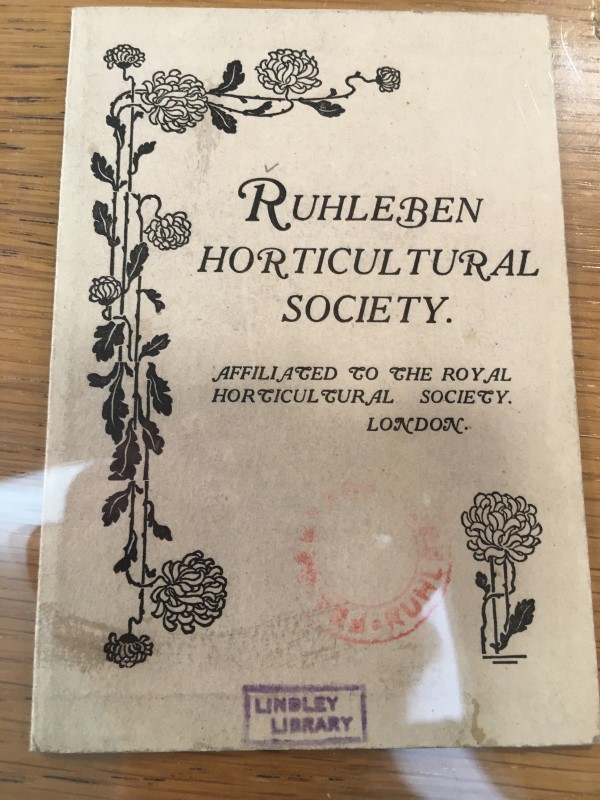
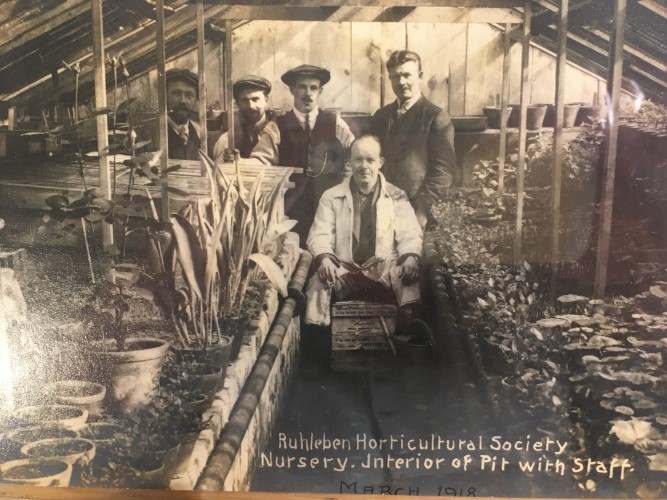
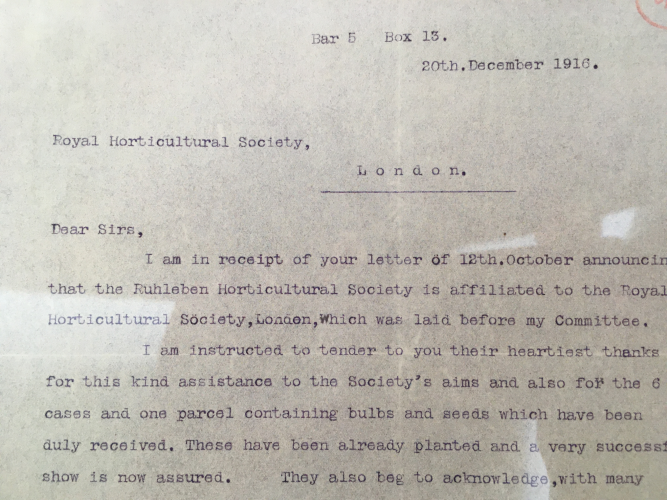
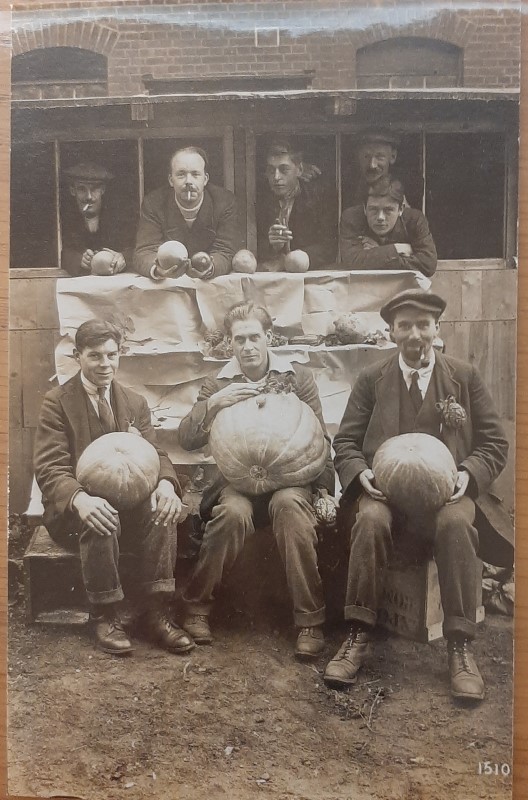
if you are interested in the history of Ruhleben, you can see more here.
Our next treat was to view two very old leather bound herbals. These were encyclopaedias of plants and their (largely) medicinal uses. Most medicines were plant based, and knowledge of how to identify and use them was of great importance.
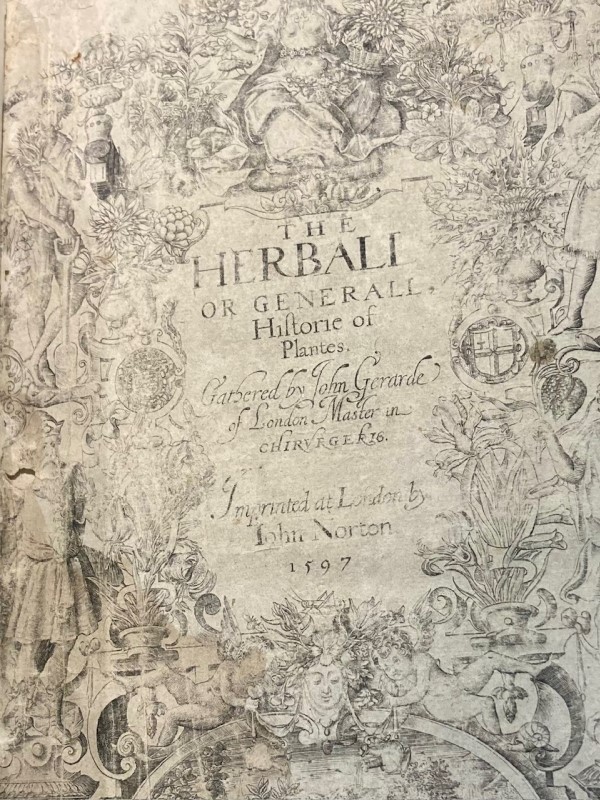
John Gerard (also John Gerarde, 1545-1612) was an English herbalist with a large garden in Holborn. His 1,484-page illustrated Herball, or Generall Historie of Plantes, was first published in 1597, and the Lindley Library owns a copy. It is the first herbal to include an index of ‘ailments’ – which were quite a contrast to today’s illnesses.
Elizabeth Blackwell’s Herbal, published between 1737 and 1739, shows her beautiful botanical artwork, all in colour. These wonderful botanical prints also show insects that she found on the plants to help with their identification. Elizabeth compiled her Curious Herbal at the instigation of Sir Hans Sloane, as a means of raising money to redeem her husband, Alexander from imprisonment for debt. She rented a house opposite the Chelsea Physic Garden, and used that as her source of plants. See more of her lovely illustrations here.
